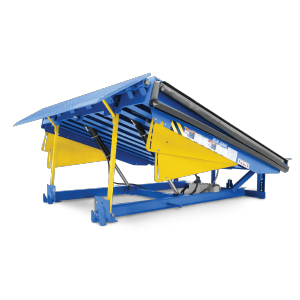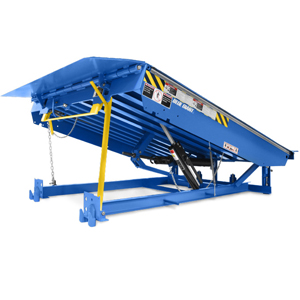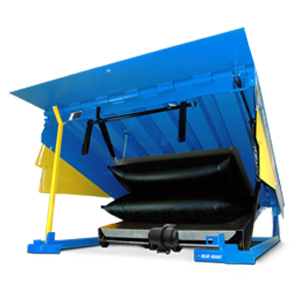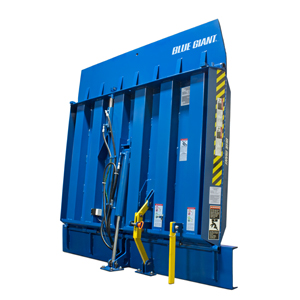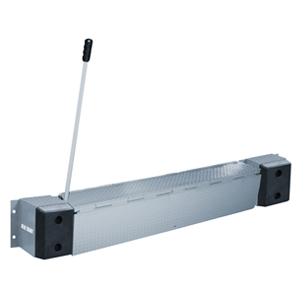DOCK LEVELERS
We sell a variety of Dock Levelers made by Blue Giant. Blue Giant dock levelers are manufactured in the newest (2018) dock leveler manufacturing plant in the world. In addition to adding vertical manufacturing, laser cutting, and robotic welding into their manufacturing process, Blue Giant dock levelers are the only dock leveler in the world to offer a powder coat finish for years of corrosion free service.
Hydraulic Dock Levelers are the most common applied dock leveler in most factories and warehouses. The deck plate is lifted and lowered into place with the assist of a hydraulic cylinder. The dock attendant need only push a button on the control station to begin movement of the deck. Hydraulic dock levelers are available in a variety of power sources including 115 and 230 volt single phase, as well as 230 & 460 volt three phase power.
Mechanical Dock Levelers are the second most common type of levelers after hydraulic. Mechanical levelers are less ergonomic than a hydraulic leveler. The mechanical dock leveler is actuated by a set of high tension springs that sit beneath the steel deck. A component called the hold down mechanism keeps the deck level, and the springs under tension. When the dock attendant is ready to use the leveler, they pull up on a chain that releases the hold down mechanism, and this sends the steel deck upward into the air. The dock attendant then walks onto the leveler platform, and uses their body weight to lower the steel deck down onto the bed of a tractor trailer.
Air Bag Dock Levelers are far less common than hydraulic and mechanical dock levelers. Air bag levelers were introduced as a “green” alternative to hydraulic levelers. This type of leveler uses rubber air bags under the deck to move the platform up and down. The bags are filled via a small motor located under the leveler platform. The motor is actuated by a simple wall mounted push button similar to the hydraulic leveler.
Vertical Dock Levelers are most common in FDA approved facilities, including both agriculture and pharmaceuticals. Vertical dock levelers are unique in the fact that they are the only dock leveler installed 100% inside the building. Traditional dock levelers allow for cracks to exist between the dock wall, and the steel leveler. Those cracks allow the outside environment to creep into the controlled indoor environment. Along with the outside environment comes bugs, and rodents. The vertical dock leveler is installed in such a way that the overhead door makes a complete seal with the loading dock wall, and will not allow any outside environment or rodents into the building. Vertical dock levelers are more expensive to purchase than traditional pit-style dock levelers.
Edge-Of-Dock Levelers serve a purpose for intermittent, low capacity, shipping dock applications. Edge of dock (EOD) levelers get their name from the fact that they are installed on the top corner edge of the cement loading dock wall. EOD’s are not designed for use with a fork lift truck. This type of leveler has a much shorter life span than a traditional dock leveler. Most edge of dock levelers are installed in a location that is completely open to the elements. This coupled with the fact that the concrete curb the leveler is attached to will eventually begin to fail and require repair, makes the EOD more of a temporary shipping dock solution. In all, edge of docks are most applicable in facilities that do not ship frequently, do not intend to use a fork truck, and are okay with the associated repair and replacement costs that come with the shorter lifespan edge of dock leveler.

